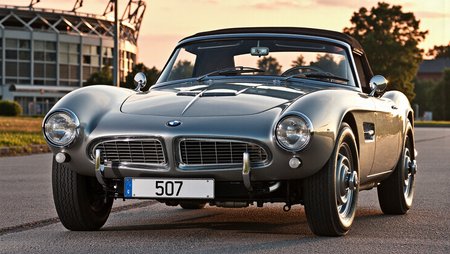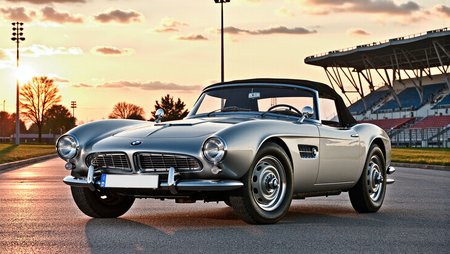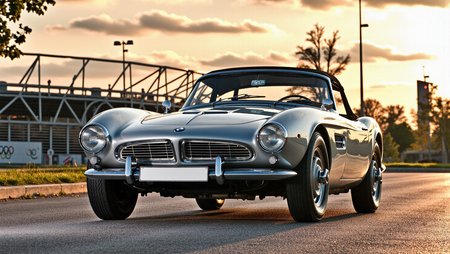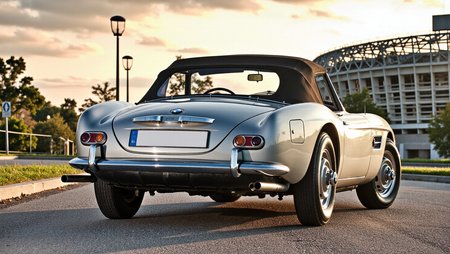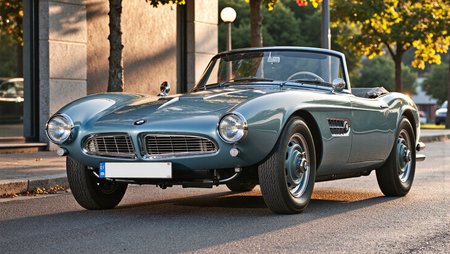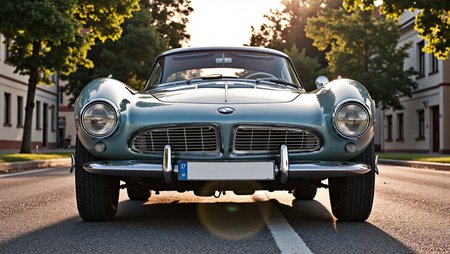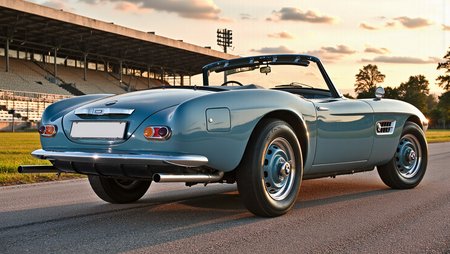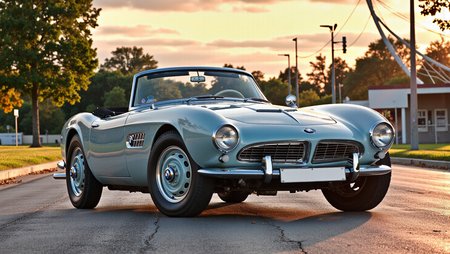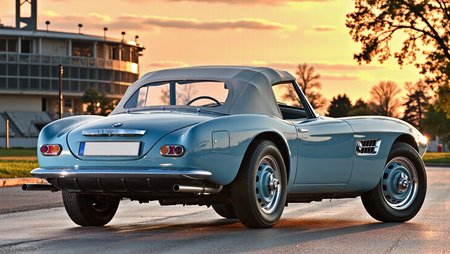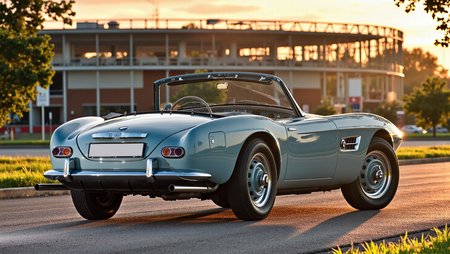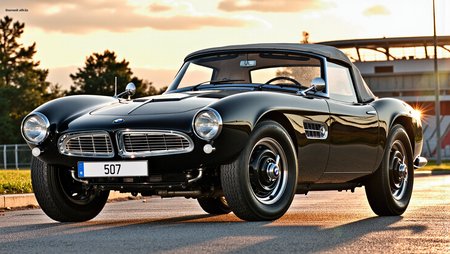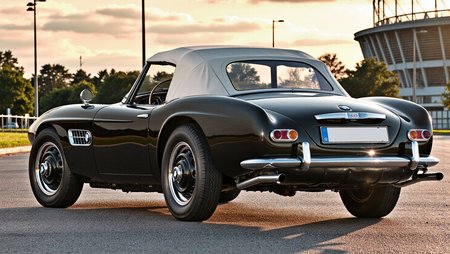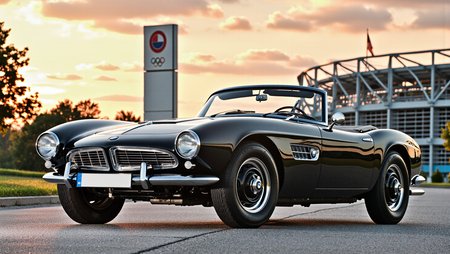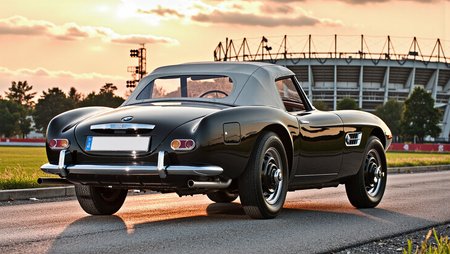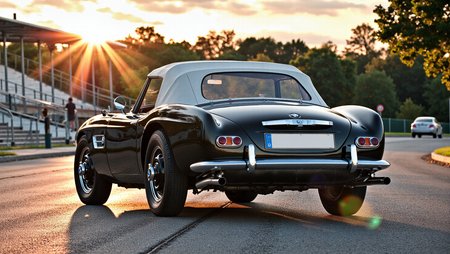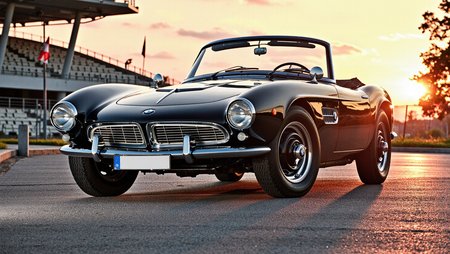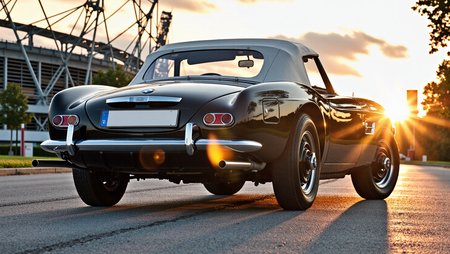The Beautiful Failure: A Summary of the BMW 507's Paradoxical Journey
The story of the BMW 507 is one of the most dramatic paradoxes in automotive history. Conceived as a high-volume sports car to conquer the American market, it emerged as a breathtakingly beautiful, hand-crafted roadster that was a commercial catastrophe. With production ceasing after only 252 cars, the 507 nearly bankrupted its manufacturer, contributing to a staggering corporate loss in 1959. Yet, this spectacular failure evolved into one of the world's most revered and valuable classic cars, with pristine examples now commanding multi-million-dollar sums. The 507's journey from financial ruin to blue-chip icon is a compelling narrative of art clashing with commerce, and how a glorious misstep became the price of immortality.
The car's genesis lies in the post-war struggles of BMW and the ambitious vision of one man: Maximilian "Max" Hoffman, an influential New York-based car importer. In the early 1950s, BMW's lineup was an awkward mix of Isetta microcars and stately but slow "Baroque Angel" sedans. Hoffman identified a lucrative gap in the American market between the ultra-expensive Mercedes-Benz 300 SL and the more affordable British roadsters. He persuaded a hesitant BMW to build a car for this niche, proposing a target price of $5,000 and predicting sales of 5,000 units annually. This American-style mass-market dream, however, was fundamentally incompatible with BMW's German engineering-driven, low-volume production capabilities, setting the project on a perilous course from its inception.
To style the car, Hoffman championed German-American designer Count Albrecht von Goertz, who delivered an undisputed masterpiece. Goertz penned a body of stunning beauty, characterized by a long, thrusting hood, sensual lines, and two iconic features that would define BMW design for decades: the wide, horizontal interpretation of the kidney grille and the chrome-trimmed side gills. This exquisite shape was realized in hand-formed aluminum panels, a painstaking process that ensured its beauty but also guaranteed its ruinously high production cost. Underneath, the 507 was built on a shortened version of the 502 sedan's chassis and powered by BMW's first V8 engine - a 3.2-liter all-aluminum unit tuned to produce around 150 horsepower.
The 507's commercial downfall was swift and brutal, driven primarily by a catastrophic price spiral. The $5,000 target was a fantasy; the car launched in the U.S. at $9,000 and soon climbed to $10,500. This positioned it not as a competitor to cheaper roadsters, but as a direct rival to the Mercedes-Benz 300 SL—a car it could not beat. The 300 SL was significantly faster and more powerful, making the 507 seem overpriced and underpowered by comparison. Hoffman's sales plan evaporated, and BMW lost money on every single car it built. The financial bleeding was so severe that by 1959, the company was on the verge of a hostile takeover by Daimler-Benz, a fate only avoided by a last-minute capital injection from industrialist Herbert Quandt.
Despite its sales failure, the 507's sheer glamour attracted an A-list of owners, including actors Alain Delon and Ursula Andress, which cemented its legendary status. No owner is more famous than Elvis Presley, who bought a used 1957 model while serving in the army in Germany. The story of his car—painted red to hide lipstick marks from fans, later lost for decades in a pumpkin warehouse, and finally rediscovered and restored by BMW—is now part of automotive folklore. Similarly, the 507 owned from new by motorsport champion John Surtees sold for over $5 million in 2018, setting a world record for the model and proving that a car's story can be its most valuable asset.
Today, the BMW 507's value is a perfect inversion of its past. The very factors that doomed it commercially are now the pillars of its collectibility: its extreme rarity, its hand-built craftsmanship, and its glamorous celebrity provenance. Its legacy within BMW is equally profound. The 507 established the brand as a creator of world-class sports cars and became a design touchstone. Its influence is most directly seen in the BMW Z8, a modern homage to the 507, and its signature side gills have become a recurring motif on subsequent BMW roadsters. The 507 remains a timeless monument to the idea that sometimes, the greatest and most enduring successes are born from the most beautiful failures.
Description
Initial release of the LoRA.
